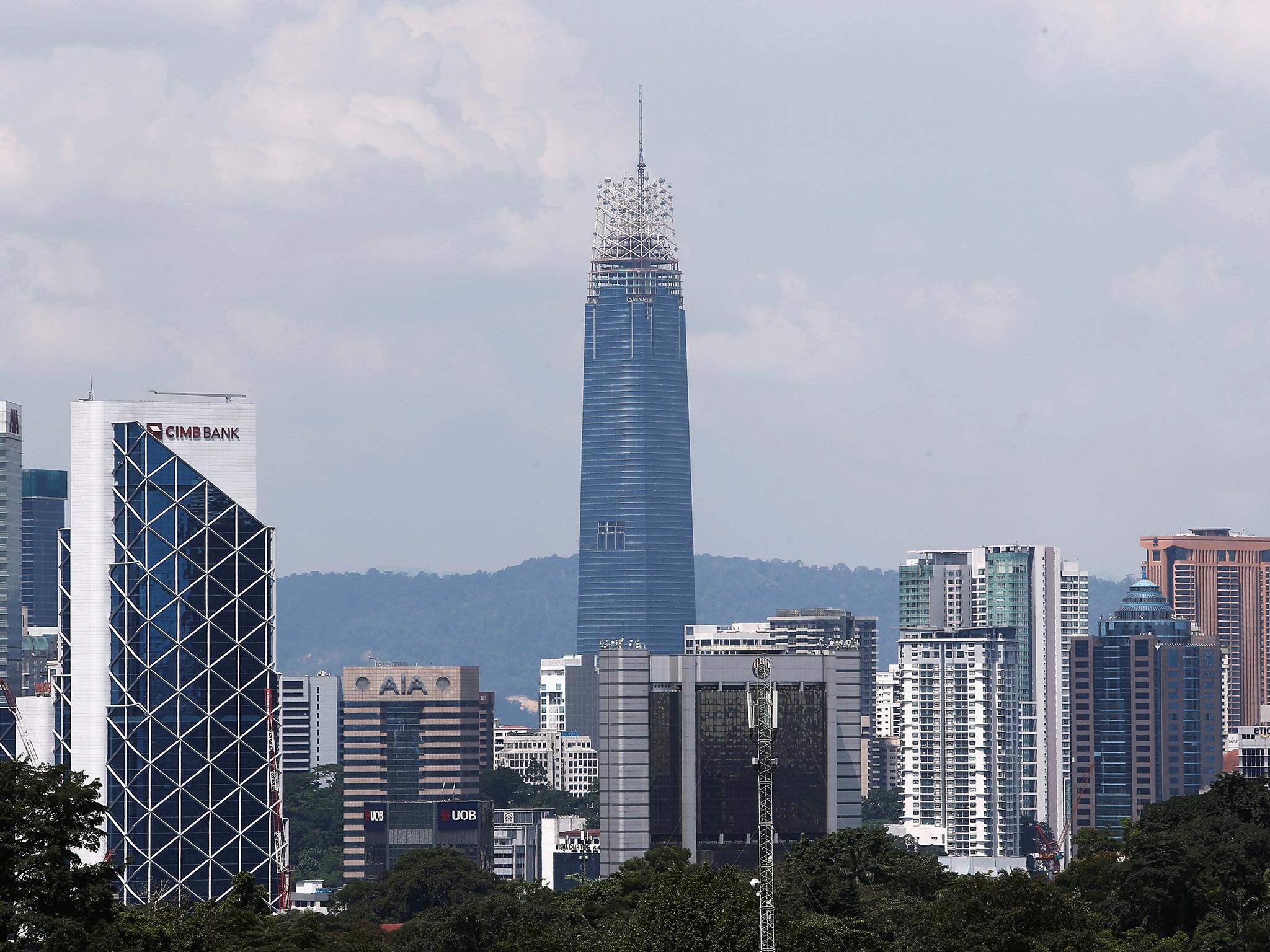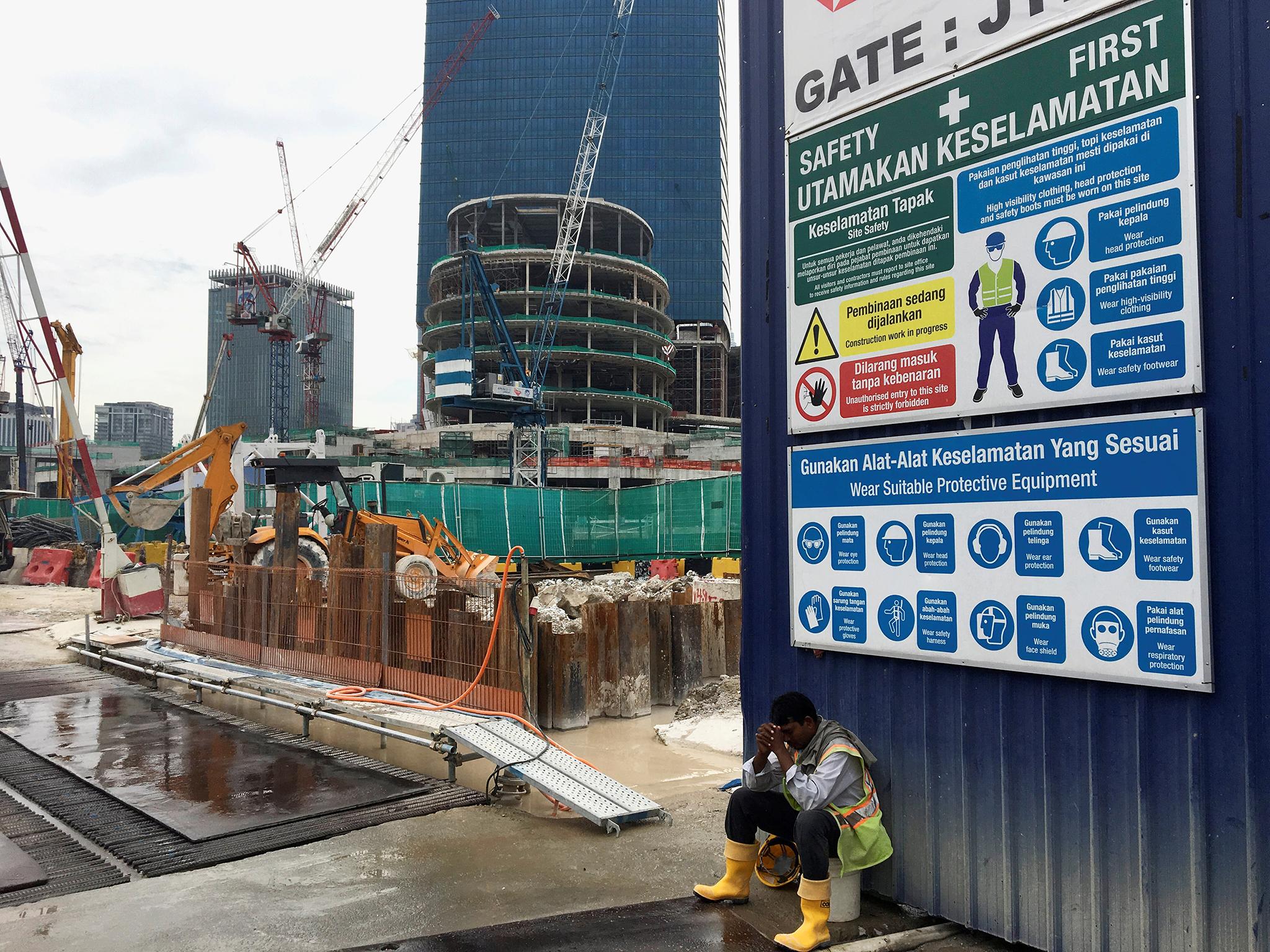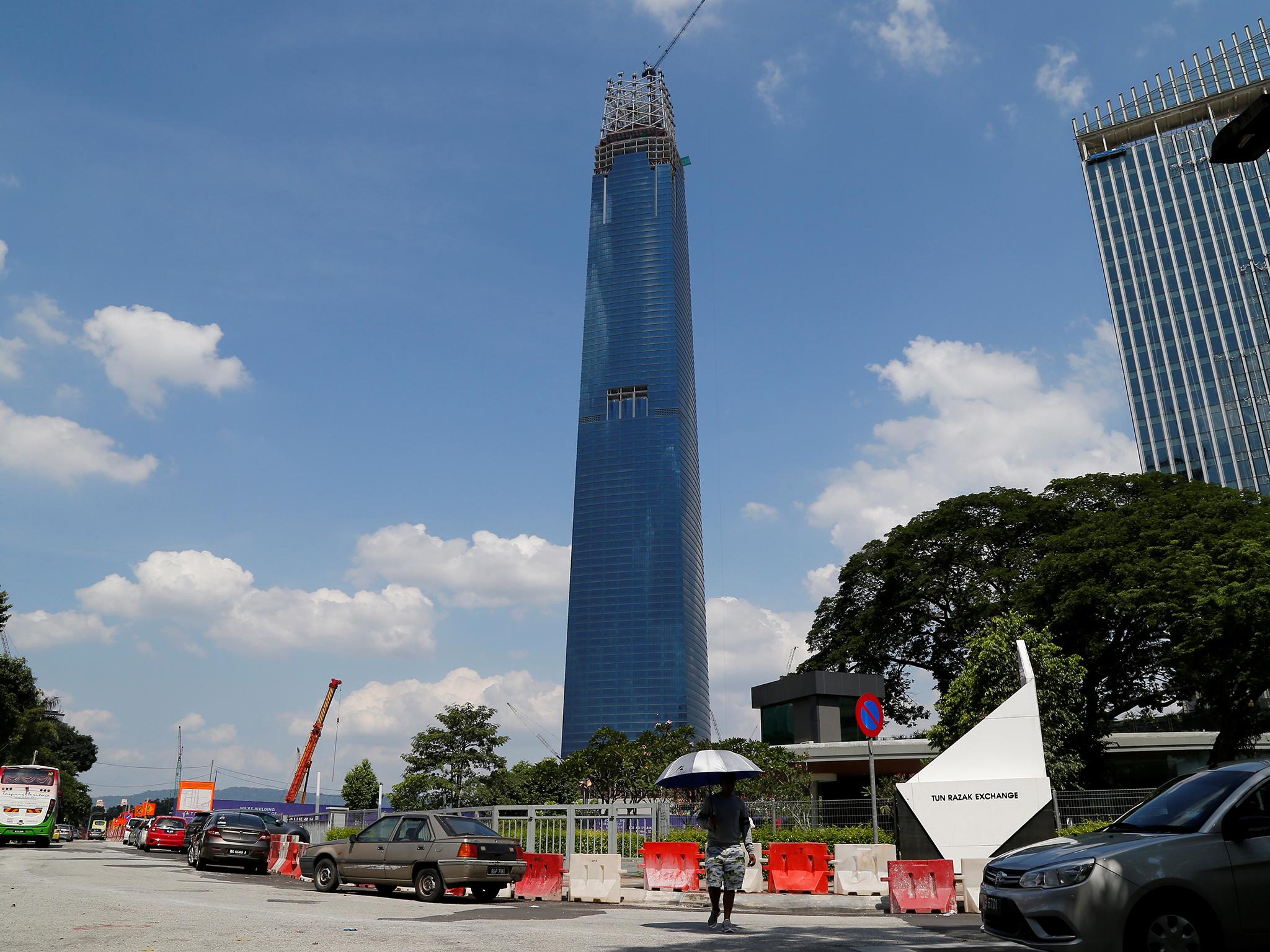Malaysia seeks to complete a $10bn project rocked by scandal
The Exchange 106 Tower, set to become one of Asia’s tallest buildings, has been plagued by charges of government corruption, embezzlement and money laundering

Your support helps us to tell the story
From reproductive rights to climate change to Big Tech, The Independent is on the ground when the story is developing. Whether it's investigating the financials of Elon Musk's pro-Trump PAC or producing our latest documentary, 'The A Word', which shines a light on the American women fighting for reproductive rights, we know how important it is to parse out the facts from the messaging.
At such a critical moment in US history, we need reporters on the ground. Your donation allows us to keep sending journalists to speak to both sides of the story.
The Independent is trusted by Americans across the entire political spectrum. And unlike many other quality news outlets, we choose not to lock Americans out of our reporting and analysis with paywalls. We believe quality journalism should be available to everyone, paid for by those who can afford it.
Your support makes all the difference.With its reflective blue glass facade and 12-story clear glass crown, the 1,615ft Exchange 106 Tower is meant to make a commanding statement about fast-growing Kuala Lumpur’s readiness to be regarded among the world’s great cities.
The 4 million-square foot office and retail skyscraper, expected to be completed before the end of the year, is the centrepiece of the $10bn (£7.6bn) Tun Razak Exchange; an office, retail and residential development sponsored by the former prime minister, Najib Razak, to turn 70 acres of the central business district into a new global finance centre.
Among the world’s 15 tallest buildings, the tower stands 133 feet higher than the Petronas Twin Towers, which have been landmarks on the Malaysian capital’s skyline since they were opened in 1998.
But the building’s significance has been overshadowed by charges of government corruption, embezzlement and money laundering.
On 9 May, Malaysians elected lawmakers to parliament from the Pakatan Harapan opposition coalition. Their leader, Mahathir Mohamad, a reform candidate and former prime minister, replaced Najib and his ruling Barisan Nasional party.
Mahathir’s victory was built on persistent and penetrating criticism of corruption in a nine-year-old national development fund, 1Malaysia Development Berhad, known as 1MDB, that was initiated and overseen by Najib. 1MDB started the Tun Razak Exchange and, until three years ago, was its principal developer.
But several investigations, including one by the FBI, have calculated that $4.5bn is missing from the development fund, and some $731m was diverted to Najib’s personal accounts. On 3 July, Najib was arrested and charged with theft and money laundering. He pleaded not guilty and was released on bail.

In June, the finance minister, Lim Guan Eng, told reporters that $750m was “misappropriated” by 1MDB from the Tun Razak Exchange, known as TRX. The Mahathir administration, he said, had nevertheless decided to invest almost $700m more to complete the project.
“The Malaysian cabinet has decided to support the TRX project to recoup all misappropriated funds, repay all borrowings, recover all funding investments and opportunity costs as well as potentially achieve a small surplus return,” Lim said in a statement.
The Exchange 106 Tower and the new financial centre were particular favourites of Najib. The Tun Razak Exchange is named for his father, Abdul Razak Hussein, Malaysia’s second prime minister. Najib’s allegiance to the project helped persuade the Mulia Group, a big developer based in Jakarta, to spend $166m for 3.4 acres in the exchange, enough room to build the tower. Mulia owns 49 per cent of the tower; the Malaysian Ministry of Finance owns the other 51 per cent.
The Tun Razak Exchange was included in a $100bn infrastructure construction campaign started by Najib in 2009 to elevate Malaysia from a middle-income country to what he called a “top 20 nation”. Those projects included new rail lines and stations, mixed-use real estate developments, ports, highways, pipelines and energy plants.
Since the May election, Mahathir, the new prime minister, has cancelled or suspended most of the big projects, including two pipelines, a Kuala Lumpur metro line and two national train lines. But with the Mahathir administration’s new investment in the Tun Razak Exchange, the Exchange 106 Tower will be finished on schedule before the end of the year, and the entire 70-acre development appears on a clear path to completion by the early 2020s.
Until the corruption scandal broke into public view in 2015 and its assets and responsibilities were restructured, 1MDB was responsible for land sales and development in the Tun Razak Exchange. The finance ministry assumed 1MDB’s share of the project last year.
Mahathir has hired PricewaterhouseCoopers to audit 1MDB accounts. Malaysian auditors previously reported the fund’s losses at $14bn, according to government reports. Those losses and other government obligations from the concrete and steel infrastructure projects started by Najib contributed to more than doubling the national debt – to $250bn – since he was elected in 2009.

Since 2012, according to Malaysian officials, 1MDB spent about $925m to guarantee loans, provide advances and purchase land at the Tun Razak Exchange. 1MDB recouped a portion of its expenses from selling land parcels within the project’s boundary.
Both the tower and the larger exchange are hives of active construction. More than 2,000 workers, labouring around the clock, swarm the site. Other projects under construction include a $2.8bn, 17-acre lifestyle quarter, which includes a hotel, six apartment towers and a 2 million-square foot shopping centre with a landscaped park on the roof. Lendlease, a construction and project management company based in Sydney, is developing the quarter.
Several more office towers are under construction, and the Malaysia division of Prudential Insurance has leased space in one of them.
The announcement that the government would continue to invest in the Tun Razak Exchange relieved anxiety about finishing one of Asia’s largest public-private projects.
Christine Yeap, the Mulia Group’s senior manager for marketing and leasing, says the company is working with the Mahathir administration to avoid any market disruption. The Exchange 106 Tower is about 60 per cent leased.
“Mulia Group is optimistic that the government will guide this development on the best way forward,” she told reporters in Kuala Lumpur.
Mulia markets the Exchange 106 as the “world’s most luxurious” office building.
The tower includes 100,000 square feet of retail space on two lower floors, a lobby on the 57th floor for sightseeing and 92 floors of office space.
Lobby areas are trimmed in English burl wood and marble. The onyx bathrooms are designed with $1,300 custom toilets from Japan that operate with digital controls. The floor plates stretch 28,000 to 34,000 square feet and are unobstructed by support columns. And views of the city and metropolitan region are magnificent.
“When we agreed to build this project, our chairman said it won’t be just another building,” Yeap says. “It’s going to be the best building in the world. When it opens, people will see that we reached that goal.”
The big tower fills a dire shortage in top-tier office space in Kuala Lumpur, says Michael KC Yam, a prominent developer in Kuala Lumpur.
“There are only one or two buildings that are truly Class A,” he says. “These new buildings at the Exchange will have big demand.”
The Exchange 106 and the other Tun Razak projects under construction follow a master plan that stresses energy efficiency, environmental sensitivity and access. The development will be served by a new underground station on the $5bn, 31-mile MRT1 driverless subway line that opened last year.
And the landscaped central park is a green roof. Veolia Water Technologies, a French contractor, is building a 30,000-square foot plant to treat 3.5 million gallons of wastewater daily for use in toilets, cooling and landscaping. The plant is capable of cutting water demand in half by treating and recycling at least 80 per cent of all the fresh water used in the exchange.
“The development still consumes potable water from the city,” Sandrine Guendoul, a Veolia spokesperrson, says. “The large degree of internal reuse reduces the load on the city network considerably.”
© New York Times
Join our commenting forum
Join thought-provoking conversations, follow other Independent readers and see their replies
Comments